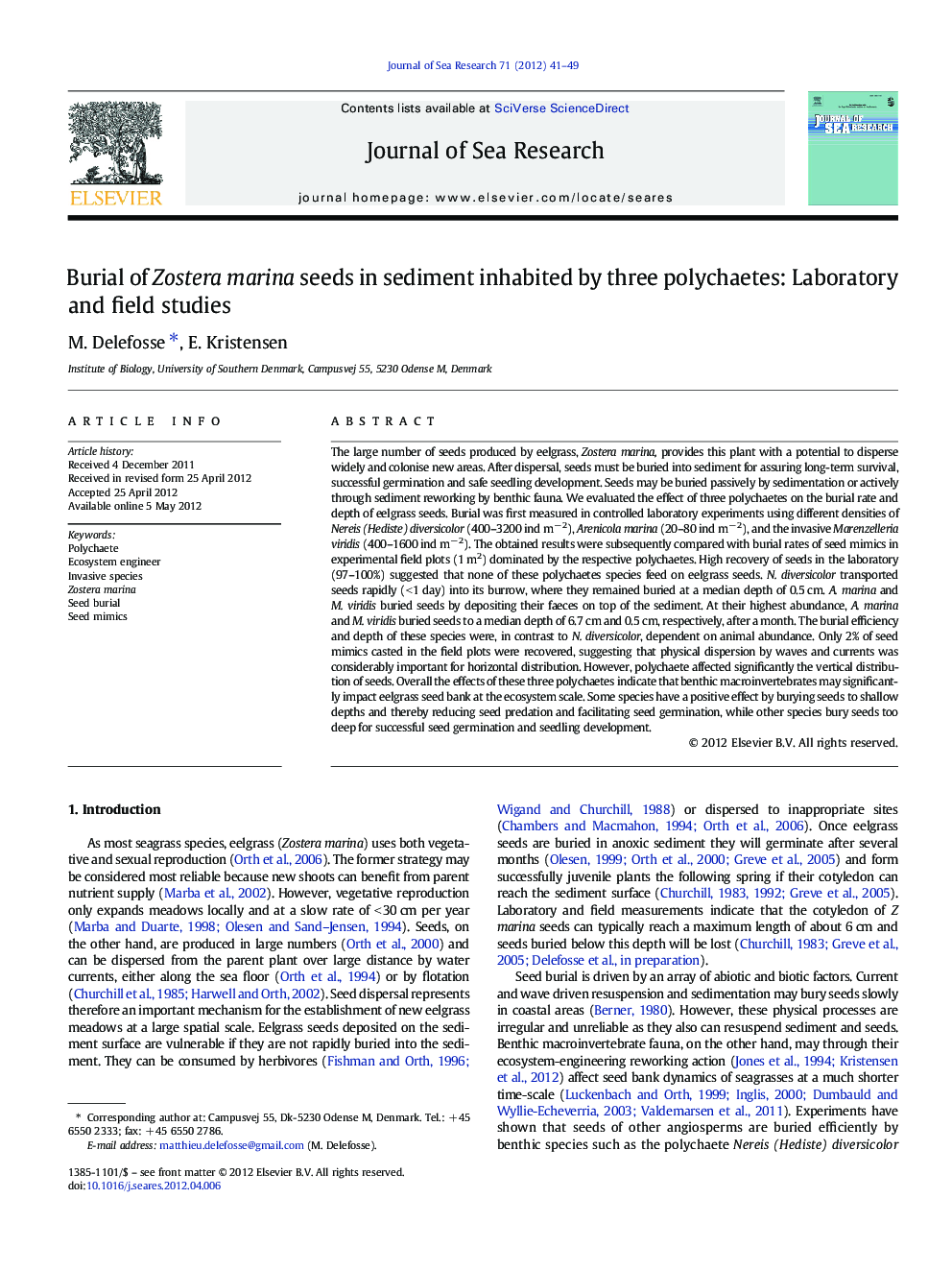| کد مقاله | کد نشریه | سال انتشار | مقاله انگلیسی | نسخه تمام متن |
|---|---|---|---|---|
| 4549965 | 1627503 | 2012 | 9 صفحه PDF | دانلود رایگان |

The large number of seeds produced by eelgrass, Zostera marina, provides this plant with a potential to disperse widely and colonise new areas. After dispersal, seeds must be buried into sediment for assuring long-term survival, successful germination and safe seedling development. Seeds may be buried passively by sedimentation or actively through sediment reworking by benthic fauna. We evaluated the effect of three polychaetes on the burial rate and depth of eelgrass seeds. Burial was first measured in controlled laboratory experiments using different densities of Nereis (Hediste) diversicolor (400–3200 ind m− 2), Arenicola marina (20–80 ind m− 2), and the invasive Marenzelleria viridis (400–1600 ind m− 2). The obtained results were subsequently compared with burial rates of seed mimics in experimental field plots (1 m2) dominated by the respective polychaetes. High recovery of seeds in the laboratory (97–100%) suggested that none of these polychaetes species feed on eelgrass seeds. N. diversicolor transported seeds rapidly (< 1 day) into its burrow, where they remained buried at a median depth of 0.5 cm. A. marina and M. viridis buried seeds by depositing their faeces on top of the sediment. At their highest abundance, A. marina and M. viridis buried seeds to a median depth of 6.7 cm and 0.5 cm, respectively, after a month. The burial efficiency and depth of these species were, in contrast to N. diversicolor, dependent on animal abundance. Only 2% of seed mimics casted in the field plots were recovered, suggesting that physical dispersion by waves and currents was considerably important for horizontal distribution. However, polychaete affected significantly the vertical distribution of seeds. Overall the effects of these three polychaetes indicate that benthic macroinvertebrates may significantly impact eelgrass seed bank at the ecosystem scale. Some species have a positive effect by burying seeds to shallow depths and thereby reducing seed predation and facilitating seed germination, while other species bury seeds too deep for successful seed germination and seedling development.
► Ecosystem engineer role of polychaetes in relation to Zostera marina seeds burial.
► Seeds are buried by Nereis diversicolor, Arenicola marina and Marenzelleria viridis.
► Seed burial is density dependent for A. marina and M. viridis.
► Biogenic seed burial is significant under natural conditions.
► High abundance of A. marina and M. viridis may hamper Z. marina reproductive success.
Journal: Journal of Sea Research - Volume 71, July 2012, Pages 41–49